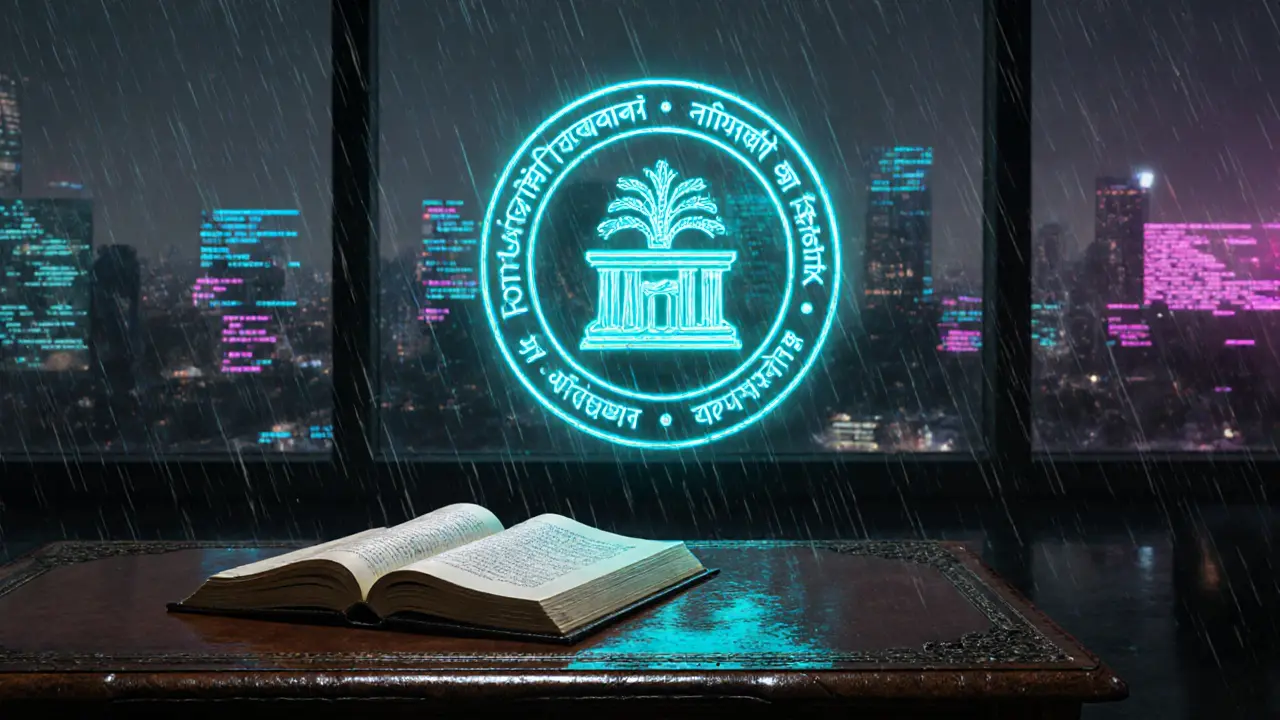Bangladesh Crypto Tax Calculator
Calculate Your Tax Liability
Tax Calculation Results
Enter your investment details to see your tax calculation
Since 2017 Bangladesh has been sending strong signals that crypto activities are off‑limits, but the legal foundation for those signals lives in a statute that predates digital money by seven decades. Understanding why the Bangladesh cryptocurrency law looks the way it does means unpacking the Foreign Exchange Regulations Act of 1947 (FERA), the role of Bangladesh Bank, and the tax paradox that follows.
What the 1947 Foreign Exchange Regulations Act Actually Says
Foreign Exchange Regulations Act (FERA) is a post‑partition law that defines "currency" in two narrow buckets: traditional paper‑based instruments and anything the central bank may officially declare as currency via a Gazette notice. The definition, listed in section 2(b), includes notes, cheques, drafts, travellers’ cheques and similar instruments, but it stops short of covering digital tokens that live on a blockchain.
Because Bangladesh Bank has never issued a Gazette notification declaring cryptocurrencies as "currency," the statutory hook that would let prosecutors charge crypto users under FERA remains missing. This legal gray zone sparks the major debate: are the bans issued by the central bank enforceable, or are they policy statements without solid statutory teeth?
Bangladesh Bank’s Stance and Its Legal Weight
Bangladesh Bank is the nation’s central banking authority, tasked with safeguarding monetary stability and overseeing the financial system. In a 2017 circular the bank announced a blanket prohibition on the use, trade, or even possession of cryptocurrencies, citing money‑laundering, terrorism‑financing, and financial‑system risk concerns.
While the circular carries administrative weight, it does not amend FERA’s definition of currency. As a result, most legal scholars agree that a direct criminal prosecution for simply holding Bitcoin would be on shaky ground unless the law is later amended or a Gazette notice is published.
How the Anti‑Money‑Laundering Framework Intersects
The Anti‑Money‑Laundering Act (AMLA) mirrors FERA’s currency definition, tying “foreign currency” to what the Foreign Exchange Regulations Act calls foreign exchange. Because cryptocurrencies do not fit neatly into either definition, AMLA‑based enforcement suffers from the same ambiguity. Regulators therefore rely on indirect tools-like monitoring bank transfers that involve fiat equivalents of crypto-to flag suspicious activity.

Enforcement on the Ground: From Banks to Underground Agents
Bangladesh’s banking system can spot transactions denominated in U.S. dollars on credit or debit cards. When such activity appears, banks are instructed to flag it and report to Bangladesh Bank. This approach catches a slice of the market, but many users circumvent the banking system altogether.
Local “agents” have sprung up in neighborhoods, offering to swap Bangladeshi Taka for crypto on an informal basis. They charge a small commission and keep a low profile, making it hard for authorities to trace the flow of funds.
Despite the ban, global exchanges like Binance remain accessible through the Google Play Store, allowing users to download apps, create accounts, and trade without ever touching a Bangladeshi bank. The same applies to KuCoin. These platforms operate outside national jurisdiction, which limits the effectiveness of any domestic enforcement.
The Tax Paradox: Treating Crypto as Property While Banning It
The National Board of Revenue (NBR) oversees tax collection in Bangladesh. It has not issued a dedicated crypto tax law, but it treats crypto assets as property under the Income Tax Ordinance of 1984. Any profit from selling or exchanging crypto is therefore subject to capital‑gains tax, even though the same activity is officially prohibited.
This creates a contradictory environment: individuals who risk a bank‑level ban may still face tax assessments if they report gains. The lack of clear guidance forces many to stay silent, which in turn hampers the NBR’s ability to collect revenue from a growing underground market.
Regional Snapshot: How Neighbors Are Handling Crypto
Bangladesh’s hard‑line approach contrasts sharply with nearby countries. The table below highlights key regulatory differences as of 2025.
| Country | Regulatory Stance | Tax Rate on Gains | Dedicated Authority? |
|---|---|---|---|
| Bangladesh | Complete prohibition via Bangladesh Bank circular; enforcement through banking channels | Capital gains taxed under Income Tax Ordinance (rate varies with income slab) | No - enforcement relies on existing banking and tax bodies |
| India | Regulated - reporting required, but trading allowed | 30% on crypto profits + 1% TDS on each transaction | No single crypto regulator; oversight split among RBI, SEBI, and tax authorities |
| Pakistan | Hybrid - new Pakistan Digital Assets Authority (PDAA) created in 2025 to license exchanges and oversee DeFi | Tax regime still evolving; proposals for 15% on crypto gains | Yes - PDAA acts as the dedicated regulator |
Bangladesh’s isolation from a regional trend toward regulated participation may limit its ability to attract fintech investment and to benefit from emerging digital‑asset economies.

Academic and Public Debate
Critics argue that outright bans penalize legitimate innovation while pushing activity deeper underground. Dr. B M Mainul Hossain, a professor at Dhaka University, has publicly suggested that a regulated framework would be more effective than prohibition.
Supporters of the ban maintain that the country’s developing financial infrastructure and existing challenges with informal money flows justify a cautious stance until robust consumer‑protection mechanisms are in place.
Looking Ahead: Possible Legal Evolutions
Two paths appear plausible for Bangladesh:
- Legislative Clarification: Amend FERA or issue a Gazette notification to explicitly include cryptocurrencies within the definition of “currency.” This would give enforcement agencies a clear statutory basis.
- Regulated Integration: Create a dedicated digital‑asset authority-mirroring Pakistan’s PDAA-or expand the remit of the NBR to issue comprehensive crypto‑specific tax and compliance guidelines. Such a move could channel underground activity into a transparent, taxable, and consumer‑protected market.
Until a decisive policy shift occurs, the current paradox-prohibition paired with tax obligations-will likely persist, leaving users to navigate a risky legal landscape.
Key Takeaways
- FERA’s 1947 definition of "currency" does not clearly cover crypto, creating a statutory gap.
- Bangladesh Bank enforces a practical ban, but its legal footing is debated.
- The NBR taxes crypto profits as property, despite the ban.
- Regional peers are moving toward regulated frameworks, highlighting Bangladesh’s outlier status.
- Future reforms could either tighten the ban via clear legislation or open a regulated pathway for digital assets.
Is holding Bitcoin illegal in Bangladesh?
Bangladesh Bank’s 2017 circular declares all cryptocurrency activities prohibited, but the underlying law (FERA) does not explicitly define crypto as currency. This means criminal prosecution for simple possession is uncertain unless new legislation or a Gazette notice is added.
Can I be taxed on crypto profits if it’s illegal?
Yes. The National Board of Revenue treats crypto as property under the Income Tax Ordinance of 1984, so any capital gains are subject to tax even though the activity is officially banned.
What enforcement tools does Bangladesh use?
Authorities monitor bank transfers in foreign currencies, flag suspicious card transactions, and trace local agents who facilitate Taka‑to‑crypto swaps. They also issue warnings to banks and fintech firms that might inadvertently support crypto services.
How does Bangladesh’s approach compare with India?
India allows crypto trading but imposes a 30% tax on gains and a 1% TDS on each transaction. Bangladesh, by contrast, bans the activity while still taxing any reported profits.
Will Bangladesh introduce a crypto regulator?
The government has not announced a dedicated authority yet, but the National Board of Revenue is reviewing updated guidelines, and legal experts are urging a formal amendment to FERA or a new regulatory body.






Comments
6 Comments
mike ballard
Bangladesh’s crypto conundrum is a textbook case of regulatory lag, where the 1947 FERA framework collides with modern AML directives and the de‑facto jurisdiction of offshore exchanges 😊.
Without a Gazette notice, the legal basis for prosecuting holders remains a gray area, forcing banks to rely on indirect monitoring of fiat‑linked transfers.
The tax authority’s property classification further muddies the waters, creating a paradox where illegal activity is still taxable.
Molly van der Schee
It’s striking how the ban pushes innovation underground while the tax code still reaches for crypto profits.
One can see the human cost when entrepreneurs are forced into secrecy, stifling potential fintech growth.
However, the dialogue emerging among scholars and policymakers offers a hopeful path toward balanced regulation.
Mike Cristobal
Prohibiting technology while demanding revenue is a hypocritical double‑standard that erodes public trust 😠.
Tom Glynn
Think of the ban as a rough draft; the real story will be written when stakeholders collaborate 🤝.
By channeling the underground energy into transparent frameworks, Bangladesh can turn risk into opportunity 🚀.
Johanna Hegewald
In plain terms, the tax office treats crypto like any other property you might own, such as land or a car.
If you sell it for profit, you owe tax, even if the central bank says you shouldn’t have it.
PRIYA KUMARI
This so‑called “protective” ban is nothing but an authoritarian gag‑order that chokes any economic progress.
The government pretends to safeguard the nation while it blindly copies outdated policies, ignoring the inevitability of digital finance.
Write a comment